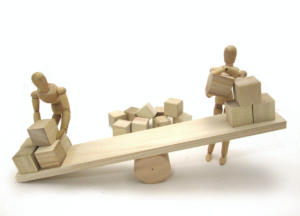 I coined the term “optimization OCD” to describe a mixture of workaholism (or a state of constantly doing something “productive”, even if it isn’t work), just right OCD, and a feeling of never being quite good enough. It’s a topic I’ve written about before in “Breaking out of the OCD cycle: lessons from my younger self,” although I hadn’t come up with a name for it at that time.
I coined the term “optimization OCD” to describe a mixture of workaholism (or a state of constantly doing something “productive”, even if it isn’t work), just right OCD, and a feeling of never being quite good enough. It’s a topic I’ve written about before in “Breaking out of the OCD cycle: lessons from my younger self,” although I hadn’t come up with a name for it at that time.
With optimization OCD, our value is conditional and based on activity, so we rush around creating lives we can’t manage in search of worthiness we never feel. We become so busy trying to fix our unworthiness by fixing everything we see around us—in our homes, jobs, relationships, or leisure time—that we aren’t really living life.
Optimization OCD is something I’ve struggled with on and off since I was a teenager with untreated OCD, when I developed what I dubbed “The Quest” to help me manage the monster in my mind. Fortunately, over the last decade I’ve also learned how to tame what The Quest turned into—optimization OCD—and in this blog post, I’d like to share ideas for how you can use exposure and response prevention therapy (ERP) for OCD to do the same.
The Quest of distraction, perfection, and absolution
My Quest, developed as a teenager to manage undiagnosed and untreated OCD, contained what I now consider the three main components of optimization OCD.
- Distraction, which eventually turned into workaholism (or “activity-aholism”). “I’d come to recognize that once my mind came up with one of its terrifying fixations—be it head cancer, scenes of medieval torture or animal cruelty, or just a general sense of dread—I couldn’t stop those thoughts from occurring. But I could distract myself from them. I could temporarily lure my mind to other places and give myself relief. Like a toddler presented with a shiny new toy, my brain seemed to momentarily drop its preoccupation with atrocities when given something stimulating to do. Such as reading fiction. Or working on challenging personal projects. Or doing homework.” Is Fred in the Refrigerator? Taming OCD and Reclaiming My Life, p. 42
- Perfection, which was my just right OCD: “The monster also seemed to quiet down if I did things perfectly, so I aimed for perfection as well. Not just in my schoolwork, but in everything. In fact, I only participated in activities where I could be perfect.” Fred, p. 42
- Absolution, which was trying to compensate for never feeling good enough: “I heard my other high-achieving friends receive these same compliments, the kind anyone would pay a hardworking, disciplined adolescent. But for me, they held much more profound meaning. They fueled my tripartite Quest, because to me, praise meant absolution. If I could garner respect, admiration, and love for what I did, then maybe who I was—a girl who sometimes had uncontrollable, visually disturbing, gruesome thoughts—wouldn’t be so bad.” Fred, p. 43
The difference between OCD and addiction
OCD and workaholism (a process addiction) can seem very similar. So how do you tell the difference? The easiest way is based on how the disorders are reinforced from an operant conditioning perspective.
Negative reinforcement
- A behavior is said to be negatively reinforced when participating in the behavior causes the removal of something you don’t like. For instance, horses don’t like the feeling of pressure, so they will walk forward when the rider applies leg pressure, because walking will cause the rider to remove the leg pressure.
- OCD is negatively reinforced, meaning that when you do a compulsion, the compulsive behaviors temporarily remove something you find aversive, such as anxiety, guilt, the “ick” feeling, or disgust.
Positive reinforcement
- A behavior is said to be positively reinforced when participating in the behavior gives you something you do like. For instance, horses like treats, and when they learn they will get a treat for doing a trick, they will want to do the trick again because it leads to a tasty reward.
A mixture of both positive and negative reinforcement
- Addictions like workaholism are both negatively and positively reinforced. When you’re participating in an addictive behavior
- You’re removing something you find aversive, such as anxiety, boredom, sadness, guilt, and other emotions, and this is negative reinforcement.
- You’re also receiving something you do like, such as feeling high or a part of a group or more energized, and this is positive reinforcement.
Example of optimization OCD
I’ll describe how this has manifested in my own life with an example of what happens when optimization OCD takes over household chores. However, optimization OCD can happen with almost anything, including work, hobbies, family obligations, vacations, and your social life.
- It tends to begin simply with a few “to dos.” I have a list of household chores (vacuum, water the inside plants, and change the pets’ water, for instance) and I like how getting them accomplished is making me feel. So I add a few more (water the outside plants and clean the solar path lights), because why not? I’ve got time and it would be great to get them done.
- But I start noticing everything that needs “fixing.” Let’s transplant those plants! And put lemon oil on that table…and on that chest of drawers…and how about on the beds upstairs! It’s all looking so nice, maybe we should mop the floor, too! Normally I don’t notice all the stuff that’s wrong, not clean, or needs fixing because I’ve done so much “not just right ERP” that I’m habituated to all the wrongness. But when optimization OCD gets going, I start noticing every little opportunity for improvement everywhere, and it starts to feel urgent to fix it all.
- Then the euphoria of adrenalizing begins. Adrenalizing means doing something specifically for the intoxicating rush of adrenaline, and it’s a key component of workaholism. I feel pumped to be getting so much done, so I want to do more (let’s wipe off all the cabinets throughout the house and clean every single sink drain!), even though all this is starting to take way longer than I had planned. Plus, OCD is telling me, “Maybe this time we’ll be able to get it ALL done! No more chores for the next month!” No matter how much I know this isn’t true, the euphoria that comes from adrenalizing makes it feel true. I can end up sitting in front of the bathroom sink with the plumbing apart hours after I started my previously short list of chores because my optimization OCD “needed” to get it all done.
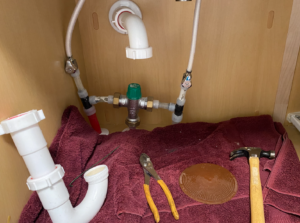
- I buy optimization OCD’s lies, and I can get stuck in doing mode, rushing around from task to tasks, for hours. OCD’s lies tend to be variations on the following themes:
- “It’s best to just do it now.”
- “This won’t take very long, especially if you just do it quickly”
- “It will get it off your to do list!”
- “Just this one little thing.”
- “Let’s just get it done.”
- “Might as well while we’re doing this other thing…”
- And famous last words: “Just one more and then we’re done!”
- I end up exhausted. If I get lost in optimization OCD for hours and hours, it can turn into an entire day of adrenalizing and “getting things done.” When this has happened in the past, I can literally walk 8 miles just in my house and yard, rushing around doing one thing after another…and I live in relatively small house on a postage stamp sized lot! I end up on the couch at day’s end unable to move. Even though I’m exhausted, I can have trouble sleeping due to the continuing rush of adrenaline, and I wake up sore and wiped out the next morning.
Characteristics of optimization OCD
People with optimization OCD tends to exhibit the following obsession-like characteristics:
- An ability to spot everything that needs to be “fixed” or “improved” in any situation
- A need to be “productive” and to not “waste time”
- A chronic feeling that you’re not good enough…
- based on some comparative metric, such as what others are doing or have achieved or what stage of life they are in
- or when you’re not doing anything productive, i.e. “in the stillness/silence, I don’t matter.”
- A focus on metrics that can prove your “worth,” such as grades, awards, promotions, and/or social media likes.
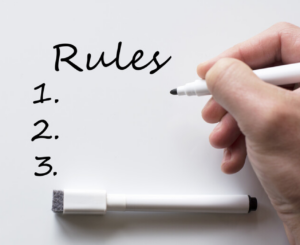 As well as these compulsive behaviors:
As well as these compulsive behaviors:
- Always doing “something,” sometimes to the point where you’re running around all day long; an inability to sit and relax
- Doing tasks until they are perfect or just right; an inability to do things until it’s “good enough.”
- Always working towards goals (as opposed to doing things because you enjoy the process of doing them), and the goals are typically lofty
- Moving the bar: once you’ve achieved something, you immediately move on to what you can achieve next.
- Getting overly frustrated, irritated and/or angry when you run into road-blocks or when things don’t “make sense,” because in optimization OCD’s idealized world, things should always flow smoothly and make sense because that’s optimal.
Plus, characteristics of workaholism, which we could also call “activity-aholism” as it relates to optimization OCD, such as:
- Prioritizing work and/or getting things done over everything else in your life, including your family and your health, i.e. work/tasks gets the best of you, and everything and everyone else gets the rest.
- Always saying yes to all opportunities
- You adrenalize, meaning that you like the feeling of “being high” that working or getting things done gives you, so you find ways to work and/or do tasks all the time so you can keep the adrenaline going (even when you’re utterly exhausted).
- Other characteristics in Workaholics Anonymous Twenty Questions list or their list of problems.
Treatment for optimization OCD
Just like with other forms of OCD, we can use the evidence-based therapy, exposure and response prevention therapy (ERP), to treat optimization OCD. However, because there is an addictive component to optimization OCD that gives us some type of reward for participating in the behavior, I’ve found it can take somewhat longer to treat than other forms of OCD and also be a little more prone to relapse. That said, treatment for optimization OCD can include ERP exercises in the following categories, and I’ve shared some examples below for each: doing nothing, setting boundaries and saying no, being non-optimal or average, and enjoying the process.
 ERP of doing nothing
ERP of doing nothing
- Sit still and do nothing. Stop everything you’re doing and sit in a comfortable chair for 1 minute. And do nothing. Don’t plan in your head or start meditating or think about what you’re going to do next or fume about how much this is a waste of time. Because it is a waste of time, and that’s the point. Once you can do 1 minute, try 2 minutes. Then 5 minutes. Then 10 minutes, etc.
- Manage worries with scripting. Use ERP scripting as needed to address persistant intrusive thoughts: I may or may not (MOMN) get everything done. That thing MOMN ever get fixed/finished. I MOMN become lazy. My house/work/social life MOMN become a big mess. I MOMN miss things that are important, etc…
The goals of this exercise are:
- To learn that you can handle the feeling of being vs. doing.
- To decouple the link between your worth and your activity/productivity. It’s only in doing nothing that you can break the link and eventually learn that you are worthy just sitting on the couch and being…not doing.
- To learn to enjoy sitting still and doing nothing, and to look forward to it.
Before working on this blog today, I sat on the couch and did nothing for 30 minutes. I look forward to my times of just being, and paradoxically, I think I’m more productive when I am working because I alternate rest and engagement. To learn more about the power of rest, read The Power of Full Engagement (see below).
ERP of setting boundaries and saying no
- Create guard rails for yourself. You can start to put boundaries on your activities. For instance, maybe you don’t want to check your work email after 7 p.m., or do chores late in the evening, or go out to lunch during the week. These boundaries can help you with decision-making as you start to do what you want to do versus what optimization OCD wants you to do.
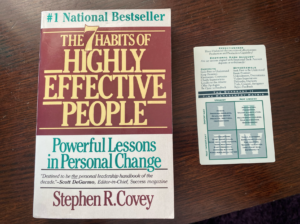
- Do important tasks first. Use Stephen Covey’s urgent vs. important matrix to identify the important task items so you can focus on those first, and this is a great article that talks about how you can implement this process. Then, you can start doing the exposure of taking some of the not important, not urgent items off your list. And the other not important items may or may not ever get done! This is how you start claiming back your power over your time and choices versus optimization OCD telling you that you must do everything.
- Try time blocking. Put blocks of time in your schedule for the important things, such as this example given by one productivity expert. Then during those times turn off all distractions so that you can focus. I use time-blocking for my writing and find it incredibly effective.
- Schedule tasks on particular days. Keeping a running to do list that you look at each day feels overwhelming and like you’re never getting anything accomplished. It also makes you vulnerable to adrenalizing to “just get it all done.” Instead, I put specific tasks on specific days (I use the BusyCal app for this purpose). Then when you make your schedule for the day using the urgent vs. important matrix described above, you can find a time to work on those tasks, or move them to another day or drop them altogether if it turns out they don’t need to done.
- Say no to things you don’t want to do. I think many of us accept some invitations or pursue some opportunities because we feel we “have to,” leaving us very little time or energy to pursue the things that we want to do. Saying “no” is a people pleasing exposure that can be well worth doing, as Kimberley Quinlan and I discuss in an episode of her podcast.
- Schedule in rest breaks. And take them, even if you have to force yourself to take a few minutes for yourself.
- Schedule in vacations. And take them, even if you have to force yourself to go have fun! I have found that my fellow Americans can be terrible at both taking breaks and vacations, by the way, thus the reason for the repetition for my U.S. readers.
The goal here is to stop creating lives we can’t keep up with, and instead create lives that are enjoyable to live.
ERP of being non-optimal or average
- Waste time. Watch movies or TV programs or walk through a local shopping area for no purpose whatsoever.

- Purposely mess stuff up or leave mistakes. The people who built my house were sloppy, and they left tons of gaps in the grout between bricks—gaps that would eventually lead to water damage if not addressed. After the contractor didn’t show up to fix the gaps once I’d found them, I bought a tube of mortar and did it myself, but the mortar color I chose was wrong. I could have painted the mortar and made it look right but I decided not to, and it’s been wrong for 3 years now. Every time I see it, I tell myself, “Yay! Look at the non-matching mortar. I’m so glad it’s imperfect.”
- Leave things undone. I adopted a 60-pound Husky mix during the pandemic, and he is a shedding machine. To keep up with the hair, in the past few months I’ve been vacuuming for 5-10 mins each day, and by the end of the week, I’ve vacuumed most of the house. But, the house is also never all clean at once. Now I’ve decided that’s too much vacuuming, and I’m going to do my daily vacuuming every other week. I will have more hairballs floating around, but I’ll also have more free time.
- Do less than other people are doing. I decided to purposely not present at or attend the 2023 IOCDF conference, even though almost everyone I know in the OCD community attended. I do plan to submit a talk for the 2024 conference, but only 1 talk…not 5 or 6 or more like I’ve submitted in the past.
- Revel in the joy of being average. Optimization OCD likes to focus on how you’re above average, maybe even exceptional. And that seems like a good thing, until you stop to think how much work it takes to stay above average and how crushing it can be when you don’t succeed.
Think of life like floating down a river in an inner tube. If you’re always paddling like your life depends on it to stay ahead of the pack, you miss all the fun that the big crowd floating in the middle of the pack has as they move down the river together: sometimes ahead, sometimes behind, sometimes falling out, sometimes getting stuck, but finding joy, camaraderie, and common humanity all along the way.
ERP of enjoying the process
- Do a project specifically for the process. I’m almost finished writing my third book, a mystery novel, and I specifically took up the challenge to learn how to enjoy the process. I’ve been working on it for nearly 4 years, and I’ve learned how to love the process. I love spending time with my characters and telling their stories, and because I can sink into the moment as I’m working, I almost feel like I hear the characters telling me what happens next.
- Force the fun. Sometimes you just have to force the fun, which means scheduling time to do something that you think will be fun for the purpose of playing and having a good time. Play a round of mini-golf or do an escape room or try a new restaurant or hike in a new park or do one of a million other ideas that you can come up with. After you do it enough, then you’ll want to do it and won’t have to force the fun anymore!
- Use self-compassion liberally. Learning to be in the moment and enjoy whatever it is you’re doing is challenging for people with optimization OCD, so give yourself a break as you try to develop these new, potentially life-changing skills.
Optimization OCD drives you to do compulsions to help you get away from the fear of unworthiness and imperfection, and it’s a process in and of itself to learn to instead go toward what’s important to you. Treat yourself kindly along the way so that you, too, can tame optimization OCD and reclaim your life!
Resources
The following books can be great companions as you work on reclaiming your life from optimization OCD:
Radical Acceptance by Tara Brach: how to break free of the trance of unworthiness.
Tranforming the Living Legacy of Trauma by Janina Fisher: how and why trauma responses manifest—including addictive responses like workaholism—and how to manage them.
Active Hope (revised): How to Face the Mess We’re in with Unexpected Resilience and Creative Power by Joanna Macy and Chris Johnstone: how to effectively face your fears around local, national and global problems and work together with others to solve them.
The Power of Full Engagement: Managing Energy, Not Time, Is the Key to High Performance and Personal Renewal by Jim Loehr and Tony Schwartz: how to effectively manage your energy.
Sacred Rest: Recover Your Life, Renew Your Energy, Restore Your Sanity by Dr. Saundra Dalton-Smith: how and why to get more of the seven types of rest
Learn more about taming OCD
To learn more about The Quest and how I learned to manage optimization OCD, read or listen chapters 4 and 18 to Is Fred in the Refrigerator? Taming OCD and Reclaiming My Life. For more about OCD wanting things to make sense, see page 240. Click here to purchase a copy.
Sign up for my Shoulders Back! newsletter to receive OCD-taming tips & resources, including notifications of new blog posts, delivered every month to your inbox.
My blogs are not a replacement for therapy, and I encourage all readers who have obsessive compulsive disorder to find a competent ERP therapist. See the IOCDF treatment provider database for a provider near you. And never give up hope, because you can tame OCD and reclaim your life!
Photos of wooden figures © iStockPhoto / BBuilder


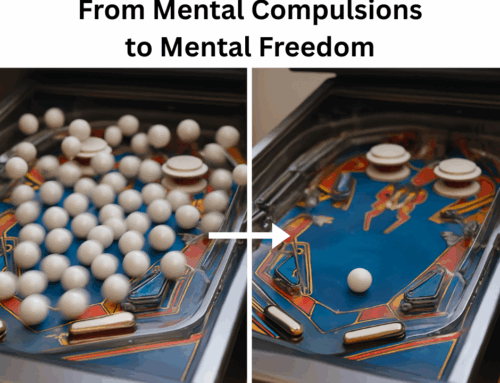




Always incredible. Thank you so much, Shala!
Wow, I feel like I could have wrote this myself. Thank you for validating the way I feel. It’s nice knowing I’m not alone.
This is the only article like this on optimization OCD, so thank you so much for writing this!